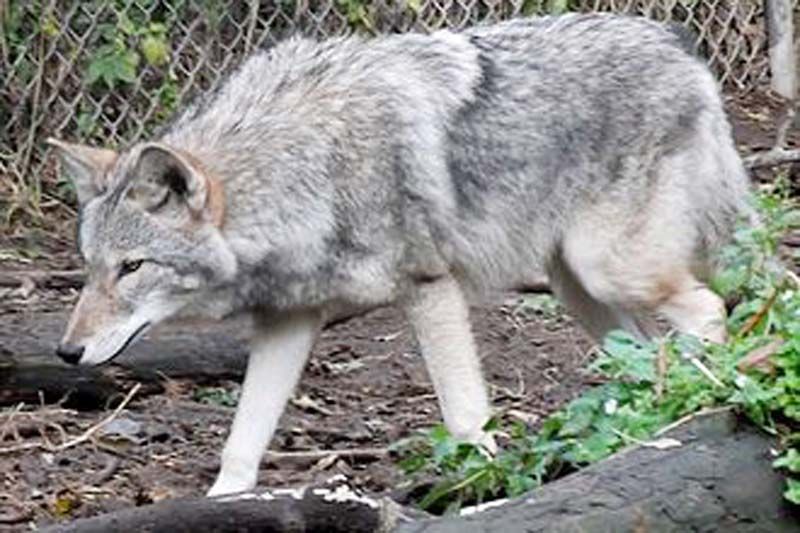Lorraine Julien | Sep 13, 2017
Several years ago, the CBC Nature of Things documentary ran a program on Coywolves and just recently they have been spotted around Toronto. As a result, I thought it would be interesting to run this article from 2013 again.
Coywolves are a hybrid breed of wolf and coyote. The term Coywolf is the unofficial name for a breed of Eastern coyote that has bred with wolves. The hybrid coyote/wolf has longer legs, bigger paws, larger jaws and brains, and a more wolf-like tail, with wolf-like traits like pack-hunting and shows more aggression than the original coyotes.
It’s thought that the hybrid animals first appeared around 1919 in Algonquin Park. It was probably happening earlier than that but it was about this time that sightings were reported. Some scientists still doubt that the Coywolf is a new species but evidence compiled for the past 100 years suggests the much smaller western coyote migrated from the Midwestern United States to eastern forests and farms where the wolf population was being killed off by humans. The coyote followed a path that took it through the Windsor area and the southwestern Ontario corridor, then north to Algonquin Park.
According to the documentary, Algonquin’s vast expanse of protected forest offered the animal a safe haven and a bountiful food source. It was there that wolves began to breed with coyotes, probably because available mates within the wolf population were in decline. Perhaps one third of the animals in Algonquin Park are now hybrids.
Coywolves have rapidly evolved and appear to have adapted to city life in a similar way that racoons have taken to big cities like Toronto. It used to be that only campers could hear the eerie howling and yipping of coyotes. Now, since the numbers of Coywolves have increased, you’re just as apt to hear them in and around cities. Their high intelligence has enabled them to survive, whether in natural surroundings or urban centres. They are so elusive that they seem to blend into parks, ravines and other green spaces in cities unnoticed for the most part. They can roam for miles at night routing through garbage and catching small animals such as squirrels, rabbits, woodchucks and cats or anything else that would make a quick meal.
There have been many sightings of coyotes in Toronto recently and people have been warned to keep their pets inside, especially at night. Last month, Toronto Police did shoot what is believed to be a Coywolf. The police had no way of knowing that the Coywolf they’d shot was a new father protecting his young. The animal and his mate had recently become parents which is likely why they appeared to be more aggressive.
While it may be unnerving to encounter a coyote in a park at night, there have actually been only two reports of fatal coyote attacks in North America in the past 500 years. The CBC documentary was filmed partly in the Cape Breton highlands where a fatal attack on a young Toronto woman took place a few years ago.
A hundred years ago, the odds were stacked against eastern wolves with deforestation and control programs, not to mention increasing urban development. Coyotes, however, were able to increase their numbers. This is when the two animals began to interbreed. Depending on their habitat and the availability of food, coyotes can adjust the number of young born. Young Coywolves strike out on their own much sooner than wolves or coyotes, leaving the den by the time they are two.
For more information on wolves and coyotes, in general, you can check out Steve Blight’s in-depth two-part article in the December 2008 online version of the Frontenac News.
More Stories
- No Winner Yet in Catch The Ace But Fundraising Target Met
- South Frontenac Food Bank Opens Second Location in Battersea
- Sharbot Lake Pentecostal Church Anniversary - 1925-2025
- Frontenac Holistic Health Fair - September 20 At Storrington Centre
- Odd Year For Real Estate - But Sales Are Steady Year Over Year
- 193rd Kingston Fall Fair
- Kim Phuc - the Napalm Girl - To Visit Flinton In November
- South Frontenac Council - September 2
- Sticker Shock - EV Charging Station To Cost North Frontenac Township
- 30th Anniversary Verona Car Show

